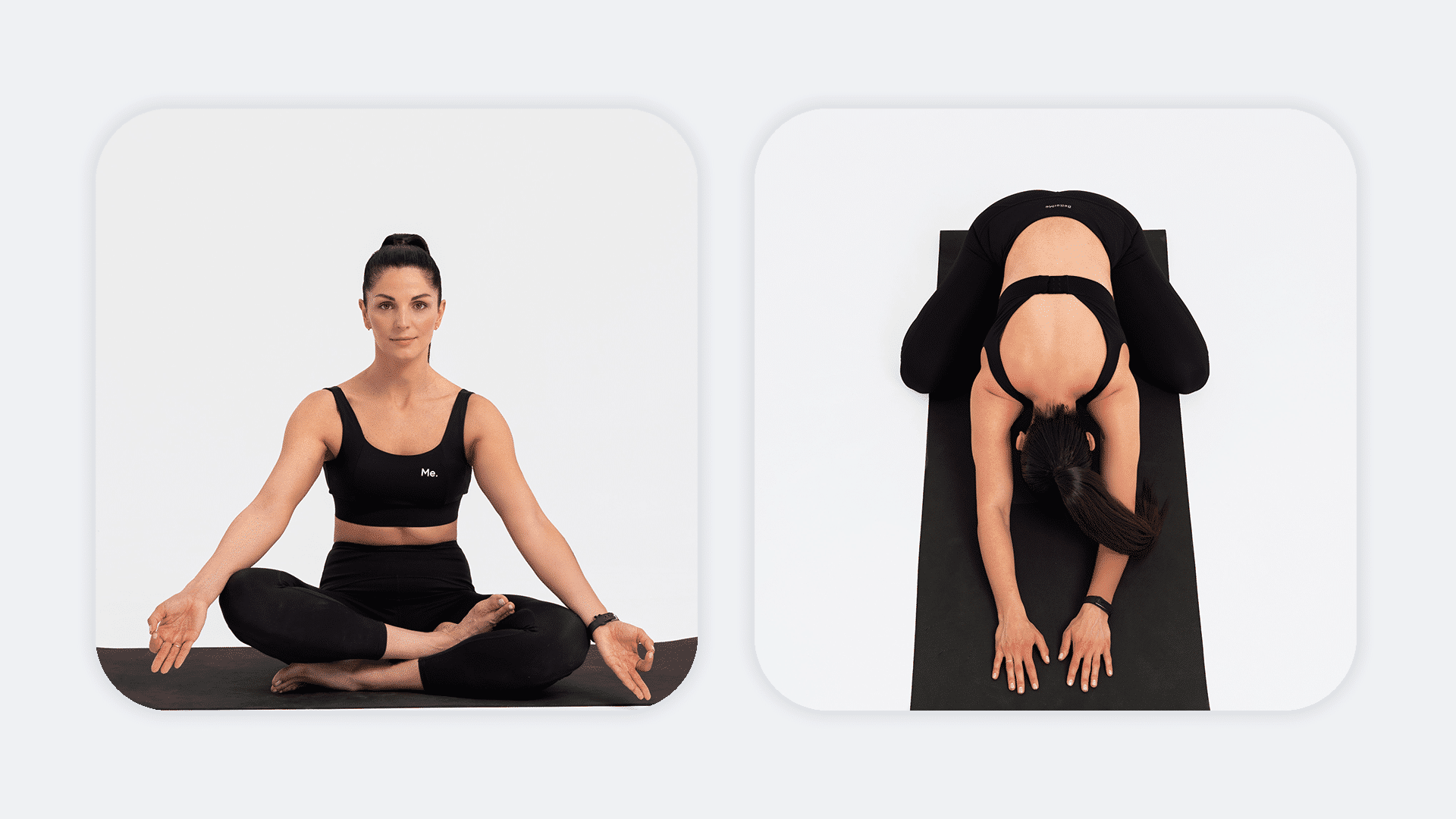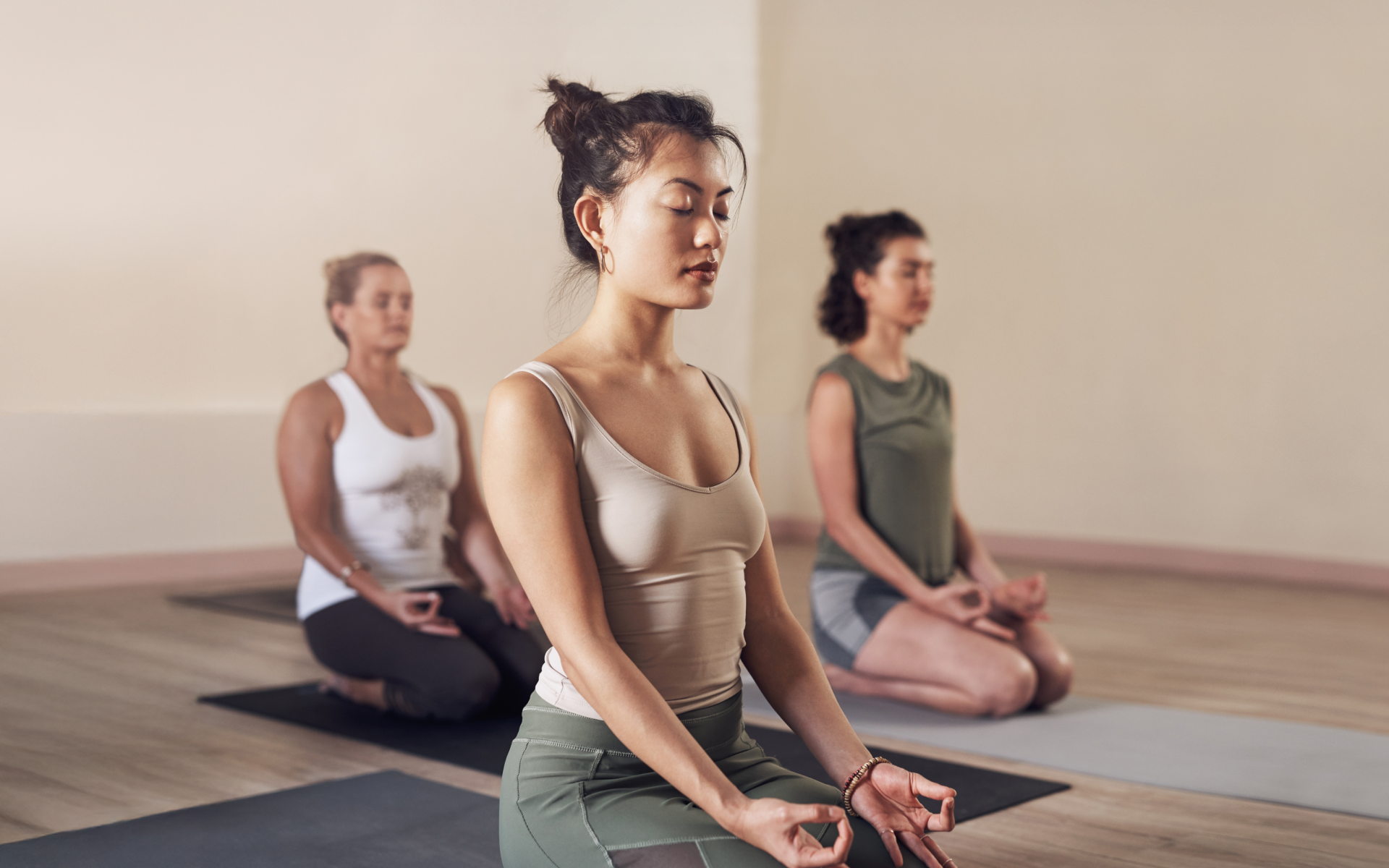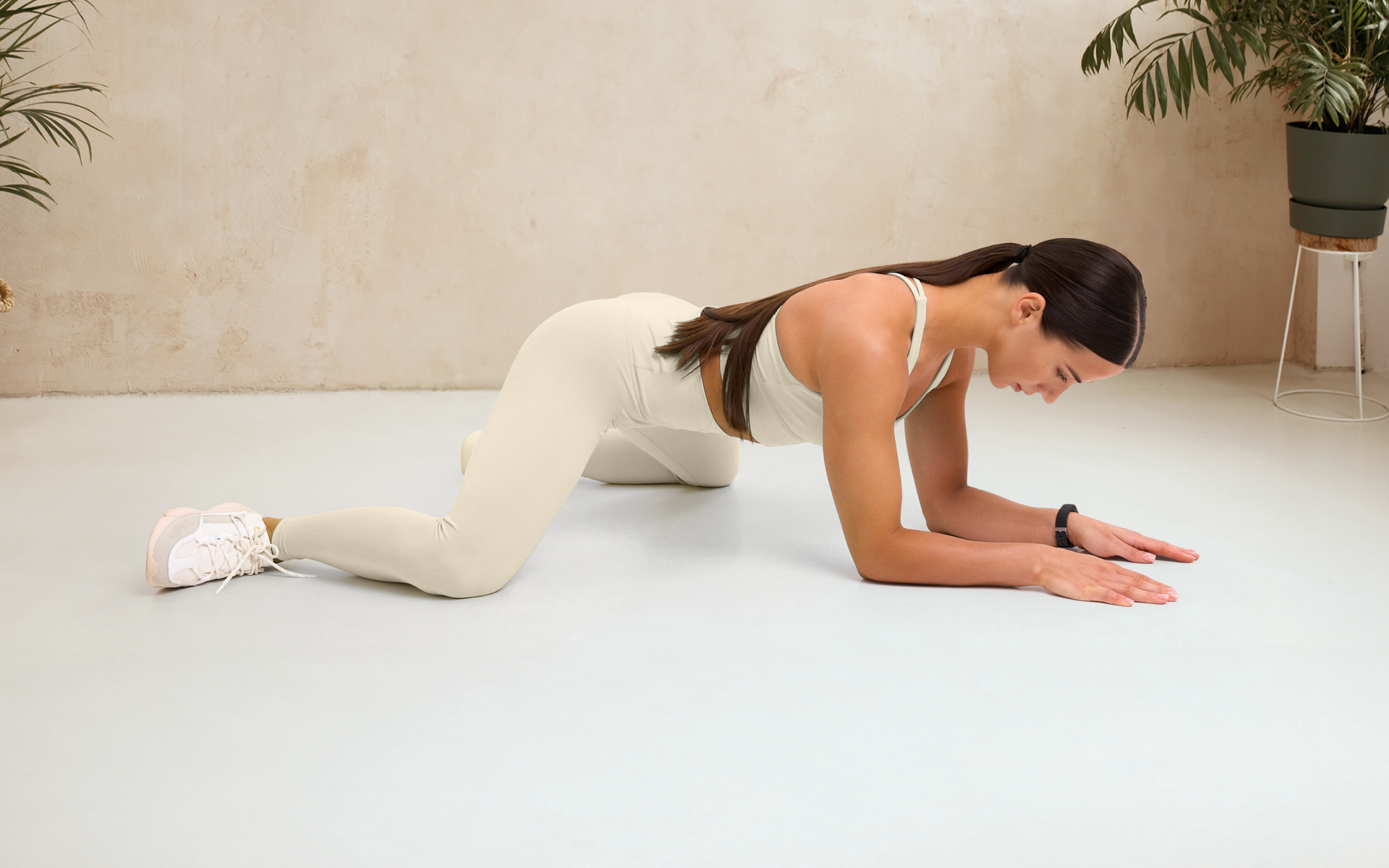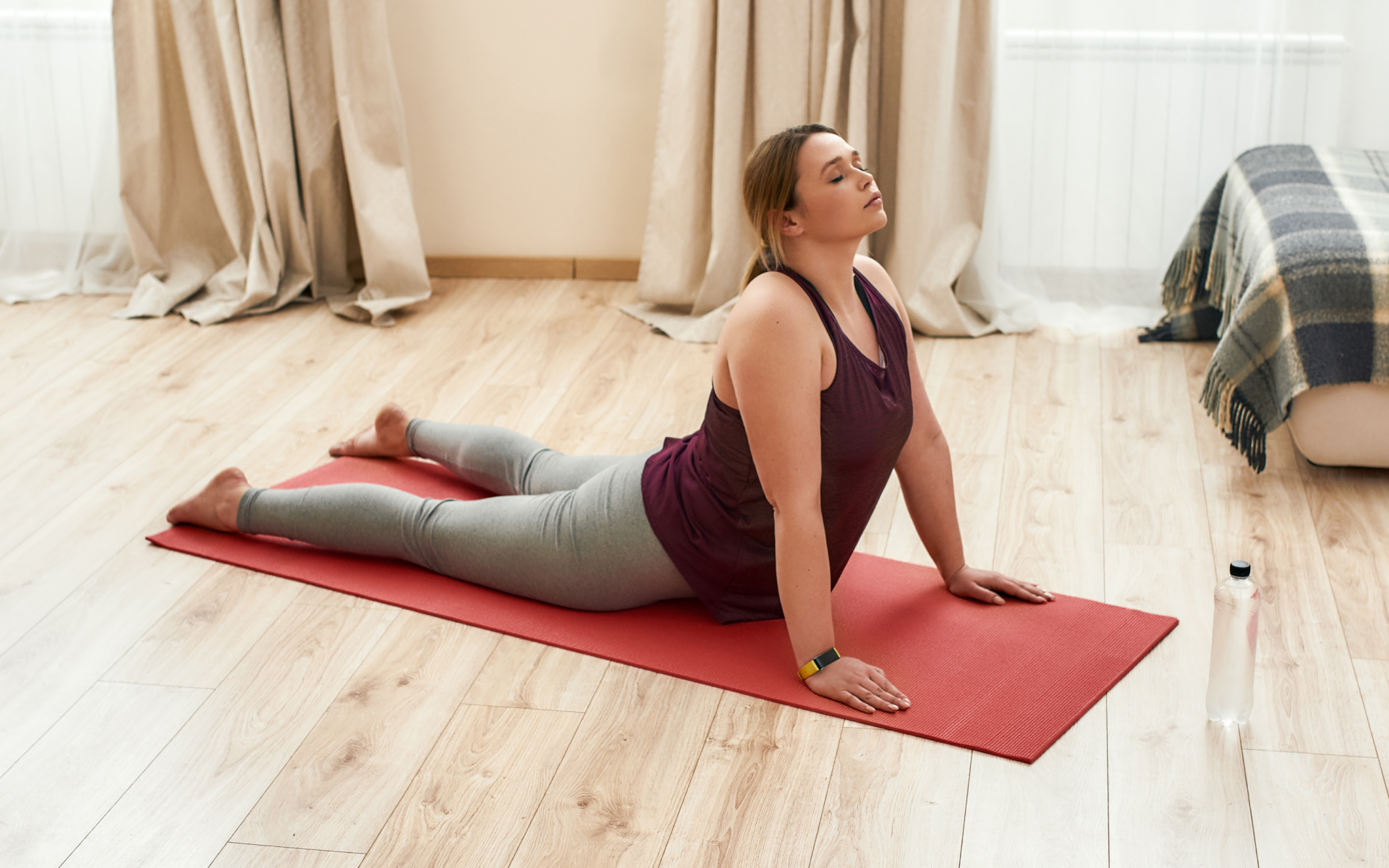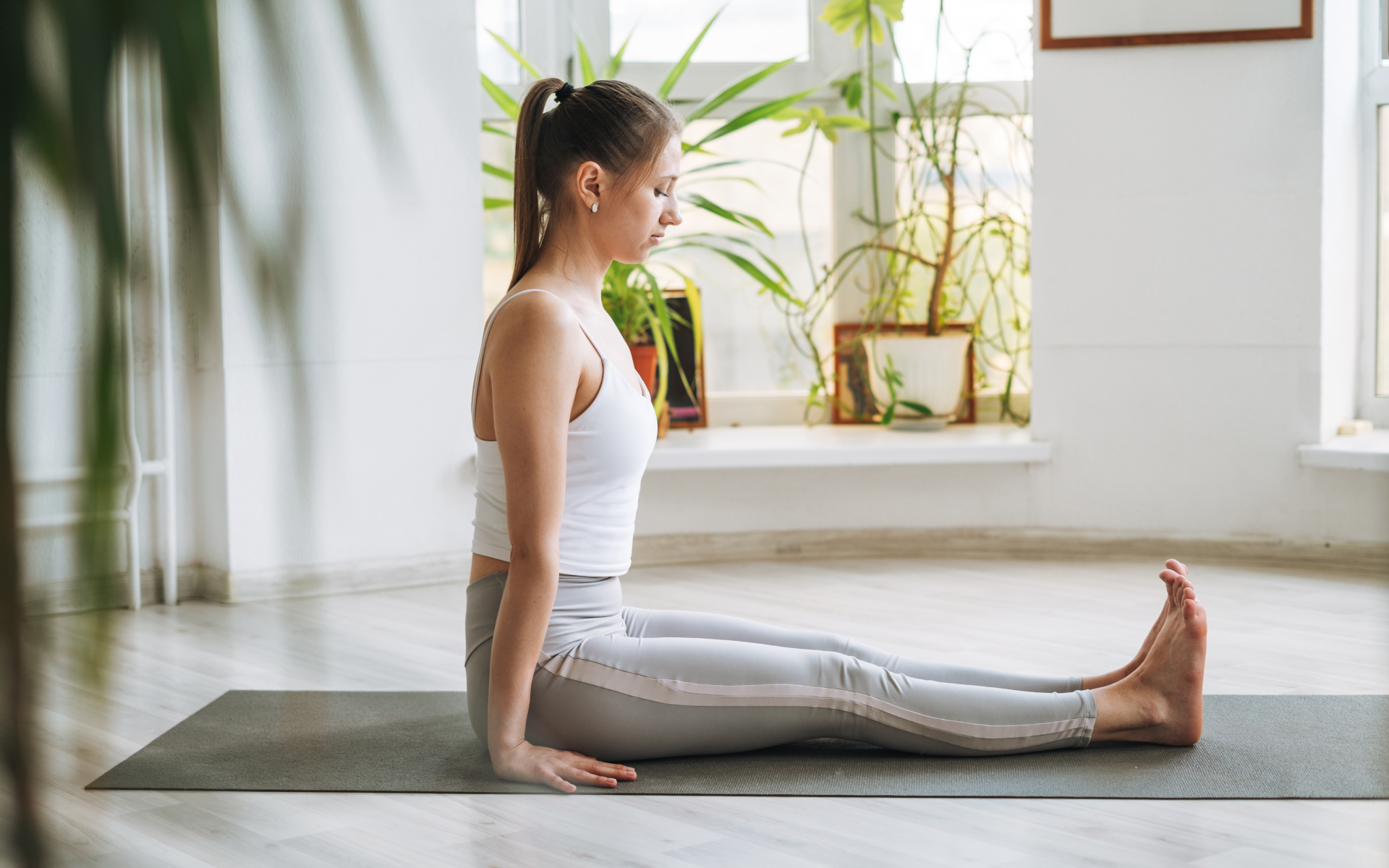What are you feeling at the moment? Your answer may whirl around your emotions: sadness, gratitude, agitation, happiness, or frustration.
Very few people tune into their body’s feelings
when being asked that question. If you thought about your body sensations and your answer sounded like “I’m feeling a slight pain in my back” or “My leg muscles seem a bit stiffer than usual” then congratulations, you either have already started with your somatic experience or at least are closer to discovering it to yourself faster than others.
Your reasons for distressing emotions might be different: they could be caused by anything from the overwhelming job obligations to the last explosion in your city causing hazardous consequences. No matter what those reasons are, constant stressors may impact your daily routine, depriving you of all the good things/moments you can squeeze out of your life.
You can alter this state or at least reduce its effects by trying therapy, of course, and additionally indulge in a relatively new but safe experience – somatic practices. They teach you to focus on your body sensations while you’re performing gentle movements.
Let’s take you through the notion of the concept itself and the 28-day somatic exercise for trauma relief. This article unravels its benefits and the efficient exercises that may help you during the healing process.
What is the somatic movement for healing trauma?
Trauma is a response to highly distressing events that exceed someone’s ability to cope and impact their person’s physical, mental, emotional, social, or spiritual well-being. A traumatic response often shows up as PTSD (Post-traumatic stress disorder) which develops in some people when the symptoms of trauma persist or worsen within weeks or months (12).
PTSD interferes with the person’s life, causing symptoms such as flashbacks, nightmares, dissociation, anxiety and depression, and emotional numbness.
With stress being a constant presence in our lives, taking time to process emotions, decompress and get into the right frame of mind is absolutely crucial. With BetterMe: Meditation & Sleep app your mental health is in good hands! Start using it now!
One of the effective ways to treat PTSD is to incorporate somatic therapy into the treatment. Among the common somatic therapy techniques that could potentially help a range of people are:
Somatic experiencing
Unlike other forms of therapy, SE does not focus on thoughts or emotions related to the traumatic experience and therefore does not directly evoke traumatic memories. It works from the “bottom up”, using the body as the entry point to track the sensations associated with memories of the traumatic event.
Sensorimotor psychotherapy
This type of therapy is a combination of psychotherapy and body-based techniques to support the client re-experience the traumatic event and carry out alternative responses/reactions to the event. This technique helps the person’s nervous system “complete” their reaction to the distressing event
Neurosomatic therapy
It may include massage and acupoint stimulation which entails a practitioner applying pressure to specific points on the body, which provokes a state of relaxation.
The effectiveness of somatic interventions in working with trauma
Are somatic therapy resources really helpful for post-traumatic treatment? There are a few studies proving this theory. A small study in 2017 identified the positive effects of somatic experiencing therapy on people with post-traumatic stress disorder.
Besides these effects, somatic practices can help people cope with the emotions associated with a distressing event. They can help with emotional regulation and moving through an emotional event with more ease. While they are generally safe to practice, it is best advised that they are carried out under the supervision of professional somatic therapists, especially at the beginning.
Further on in the following article, you will uncover some of the top somatic exercises you can perform at home at any time of the day. You don’t need any special clothing or equipment, only some space, a few minutes, and a desire to feel better.
What are the 4 somatic practices?
In fact, there are more than 4 somatic practices. But here we’re about to uncover the most effective somatic therapy practices:
- Alexander technique
- Body-Mind Centering
- Feldenkrais method
- Laban movement analysis
Let’s briefly touch on each practice:
Alexander technique
Alexander technique aims to improve posture and movement by focusing on sensory awareness, self-perception, and conscious movements. It might relieve back pain, neck aches, and sore shoulders. The main principles of the following technique, rooted in the mind-body connection, involve mindful movements, ways you move, sit or stand and harmonizing the head-neck-back relationship to enhance overall functioning (1).
The Alexander technique is usually taught in a series of private lessons. During these lessons, you learn practices that help you expand your awareness of how your nervous, muscular, and skeletal systems function. With this knowledge, you begin to restore your body’s optimal poise and balance.
Body-Mind Centering (BMC)
Body-mind centering is an embodied approach that allows us to understand how the mind is expressed through changes in body movements. In Mind-Body Centering, you learn to discover how the most subtle activity in the body creates changes in the activity of the mind. During this technique, you learn to identify, articulate, discover, and integrate various tissues in the body and the role they play in your state of state of mind.
There is a special body-based language you can learn to describe movement and body-mind relationships (3).
Feldenkrais method
Feldenkrais method is a somatic practice that uses movement to teach self-awareness and improve relationships with one’s body. The method is built on the principle that a person is made up of three main entities: the nervous system, the body, and the environment. Addressing all these three aspects is essential to build well-being and vitality in people.
Its main goal is to use awareness to improve your movement patterns which gradually may promote functionality during daily activities (9).
Laban movement analysis (LMA)
This is a special system used for the observing, describing, and interpreting human movement (2). Usually, dancers, actors, or other performers utilize this somatic method to incorporate observation, movement, and body language into their performances.
Read more: 8 Somatic Exercises for Anxiety, with Step-by-Step Instructions.
What are somatic release exercises?
You’re anxious, overwhelmed, swamped, angry and yearning to release negative emotions. Your daily tasks seem to bear heavy on your shoulders, making it difficult for you to cope with your life. . No worries, you’re not the only one here. Thankfully, omatic release exercises may be an effective way of working through blocked or repressed emotions related to past stressful experiences.
There are situations when repressing your real emotions or feelings can contribute to the development of certain health conditions, such as:
- Depression
- Digestive problems
- High blood pressure
- Heart disease
- Infections
- Low energy
- Pain (13).
To decrease this risk, you can turn more often towards your body and work with it to release stress and tesnion. Here are 3 somatic release exercises that don’t guarantee full healing but may alleviate the risk of the following conditions.
- Body Scan Exercise
- Grounding
- Somatic Yoga
Body Scan Exercise
Long exercises are not applicable to every person. You have your responsibilities and even 5 minutes of your free time per day seems too much for spending them on the somatic experience. Thus, this option is ideal for you. This is an easy exercise that may help you destress within only 60 seconds.
How to perform it:
- Unclench your teeth and relax. Breathe. Relax and breathe again.
- Move to your shoulders, dropping them down and back while moving your neck from side to side to release any stiffness or tightness.
- Shake your hands out, open and close your fists and stretch your fingers.
- Roll your eyes from side to side and blink occasionally.
- Stick out your tongue to unclench your jaw even more while relaxing other muscles in your face.
- Finally, take three deep belly breaths, inhale and exhale fully. This is an efficient way to reconnect with your body and self.
Grounding
Do you often space out in your past or the future but how many times are you staying in the present? Grounding is an effective activity anchoring you to the present moment. You gradually take your mind off past events that might have been distressing for some time. Here are several exercises to consider:
Focus On The Sensation
Start running cold water over your hands and notice how the temperature feels on your skin. Switch to warm water and focus on how the sensation on your hands changes. Do this for a few minutes.
Tune into Movement
If your body has a special way in which it wants to move, listen to it and let it do that. It might be that you want to dance, jump, shake, or gently rock. The idea is to let your body complete its natural way of moving. Observe how you feel while doing that.
Focus On Your Breathing
Focus on your breathing while inhaling and exhaling. Start by inhaling to the count of 4, holding for 3 seconds, and then exhaling for another count of 4.
Release Pressure
Tense and relax different parts of your body for a couple of minutes. Begin with your feet rooted on the ground as hard as you can. Release the pressure and notice how your feet feel now.
Somatic Yoga
Somatic yoga is a new term combining somatics (your mind-body awareness) and yoga. It should be practiced with a certified somatic yoga instructor.
Somatic yoga is more profound as you get in touch with your senses and use movements that feel good for you.
Instead of making yourself hold a difficult position, embrace a simpler automatic pose simultaneously observing feelings in your muscles.
Running a never-ending rat race, shoving trauma further and further away, falling into self-harming thought patterns, living life that’s eclipsed by constant anxiety and fear – this is what an average person goes through every day. Not addressing it will only pull you deeper into a downward spiral. BetterMe: Meditation & Sleep app will help you gain a new perspective on life and help you regain that long-lost internal balance!
How to carry out trauma release exercises
Somatic exercises for people experiencing feelings of anxiety or trauma-related symptoms are beneficial as everyone can perform them, regardless of age or sex. Why? Because they’re uniquely simple. No excruciating poses, only relaxing and comfortable practices that help you realize your body sensations during each movement.
From the headline of the article, you can understand we’re going to discover the 28-day somatic exercises challenge. This challenge may result in:
- Increased body awareness
- Feeling relaxed
- Improved mind-body connection
- reduced muscle tensions
- releasing unresolved emotions leading to improved emotional well-being
Check out these 3 somatic trauma-release exercises you can do daily. I’ve divided them into 3 categories. Complete them for 28 days straight and you may notice the positive changes in your body and mind.
- Resourcing and visualization
- Body scans
- Self-regulation
Resourcing and visualization
Resourcing is a technique where you identify those things, actions, and qualities you can draw upon for aid in times of need. They can be of psychological, emotional, intellectual, relational, artistic, spiritual, or somatic nature, and they will support you in maintaining a sense of self and safety regardless of what happens in your life and environment. If your struggle to identify them, you can aks for the support of a mental health professional.
Visualization helps you shift your state to a positive environment that may reduce your stress levels. Here’s what you can do:
- Create a safe place in your mind. Do it by recalling some positive events from the past. Maybe your perfect date, or the first cash money you spent on mouthwatering cotton candy. You could also visualize a new safe place that you haven’t experienced yet. Imagine its colors, smells, and textures. Feel your body there, absorb the atmosphere of those positive moments, and notice how comfortable your body feels.
- Think about the people you care about that make you feel peaceful. The best way to do this is to look at the old photos to focus on the specific memories.
Body scans
Body scans are also called active meditation for relaxation. To practice body scanning, you’ll need to:
- Get in a comfortable, possibly seated position, and close your eyes.
- Focus on your lower body and notice how your feet feel on the floor.
- Slowly, shift your attention to your knees, ankles, knees, and then pelvis.
- Identify pressure, temperature, tension, and any other sensations as you move up your body.
- In case of any tension, breathe deeply and exhale as you release it. When you feel the body part relax, you can move to the next part.
- After finishing with your lower body, do the same with your upper body. Include some of your internal organs like your heart, stomach, and lungs.
- Finally, end by focusing on your head, neck, and face.
Self-regulation
Self-regulation entails working through a series of emotions and returning to a baseline of safety and emotional balance.This technique is particuarly important for people with a traumatic history, who might find themsleves on high alert at all times. By practicing self-regulation, they can reduce their emotional reactions to everyday distress and previous upsetting memories. You can do some of these easy somatic techniques to help you self-regulate:
Here are some approaches to coping with intense emotional experiences:
- Butterfly hug. Cross your right arm over your chest, placing your hand near your heart, and cross your left arm, placing your left hand on your right shoulder. Hug yourself as long as possible until you feel genuinely content, even for the slightest moment.
- Tapping. Put your hand in a cupping position and tap your body all over, from your feet to your head. Squeezing different parts of your body, instead of tapping them, is also helpful for grounding as your body recognizes your boundaries. This may give you a sense of safety.
Can Stress And Anxiety Cause Weight Loss?
Can Stress And Anxiety Cause Weight Loss? Stress and anxiety, unfortunately, become the daily routine for people. Work, unpaid bills, breakups, and so many more things can impair your mood, leaving you helpless and powerless.
When your body is under stress, the sympathetic nervous system triggers the release of adrenaline and cortisol. A rush of these hormones activates the body’s fight-or-flight response, which prepares a person to fight or flee from the potential threat.
Adrenaline causes your heart to beat faster and your breathing to speed up, which can cause changes in metabolish and eating patterns (4).
For example, changes in eating habits may lead to weight gain, which is triggered by additional changes such as:
- poor sleep
- increased appetite
- unhealthful foods cravings
- reduced motivation to perform any physical activity
These factors can lead to weight gain or interfere with your weight loss interventions. That’s why the best way to keep a healthy weight or trim fat would be:
- a good sleep
- balanced diet
- engagement in physical activity
- avoiding alcohol and processed food
- contacting the therapist to work on your stress and anxiety
Read more: Somatic Therapy Exercises: Your 2023 Guide To Overcoming Traumatic Memories.
FAQs
How do you release trauma naturally?
The first way to release trauma naturally is to acknowledge your feelings which are linked to the past traumatic situations that are still bothering you. Completing these steps with the certified therapist may bring positive changes. Somatic experiencing (SE) therapy is another efficient way to release trauma. Somatic yoga, stretching, and breathing exercises may be helpful here.
What is an example of a somatic practice?
One of good examples of somatic practice is somatic yoga, stretching, meditation, mindful walking, or belly breathing exercises. They allow you to build your body awareness via cooling movements and relaxing breathing.
What are somatic movement methods?
Effective practices of somatic movement include Alexander technique, Body-Mind Centering, Feldenkrais method, and Laban movement analysis. It is better to contact a certified somatic therapist to fully immerse into these methods.
The Bottom Line
Somatic therapy is widely used in healing trauma. There is some evidence proving the positive effects of somatic practices on a range of individuals.
Among the major somatic practices are Alexander technique, Body-Mind Centering, Feldenkrais method, and Laban movement analysis.
In this article, you have also discovered the 28-day somatic exercise for trauma relief. More specifically, 3 categories of exercises that may be helpful for releasing unresolved emotions and tensions.
Other efficient ways to relieve feelings of anxiety and stress are engaging in physical activities, lifestyle changes, and seeking professional support through a therapist which could include medication
Stress and anxiety can either result in weight gain or weight loss. This depends on the individuals, their adverse experiences, and their lifestyles.
DISCLAIMER:
This article is intended for general informational purposes only and does not serve to address individual circumstances. It is not a substitute for professional advice or help and should not be relied on for making any kind of decision-making. Any action taken as a direct or indirect result of the information in this article is entirely at your own risk and is your sole responsibility.
BetterMe, its content staff, and its medical advisors accept no responsibility for inaccuracies, errors, misstatements, inconsistencies, or omissions and specifically disclaim any liability, loss or risk, personal, professional or otherwise, which may be incurred as a consequence, directly or indirectly, of the use and/or application of any content.
You should always seek the advice of your physician or other qualified health provider with any questions you may have regarding a medical condition or your specific situation. Never disregard professional medical advice or delay seeking it because of BetterMe content. If you suspect or think you may have a medical emergency, call your doctor.
SOURCES:
- Alexander technique (2021, nhs.uk)
- Assessing the reliability of the Laban Movement Analysis system (2019, ncbi.nlm.nih.gov)
- Body Mind Centering (colorado.edu)
- Can stress lead to weight loss? (2020, medicalnewstoday.com)
- Do crystals work for anxiety and depression? (2021, medicalnewstoday.com)
- Does stress influence sleep patterns, food intake, weight gain, abdominal obesity and weight loss interventions and vice versa? (2017, wiley.com)
- Somatic Experiencing for Posttraumatic Stress Disorder: A Randomized Controlled Outcome Study (2017, ncbi.nlm.nih.gov)
- Stress management (2022, mayoclinic.org)
- The Effectiveness of the Feldenkrais Method: A Systematic Review of the Evidence (2015, ncbi.nlm.nih.gov)
- The Fascinating Mechanisms and Implications of the Placebo Effect (2018, ncbi.nlm.nih.gov)
- Top 10 evidence-based supplements for anxiety (2023, medicalnewstoday.com)
- What is trauma? What to know (2020, medicalnewstoday.com)
- What to Know About Repressed Emotions (2021, webmd.com)
